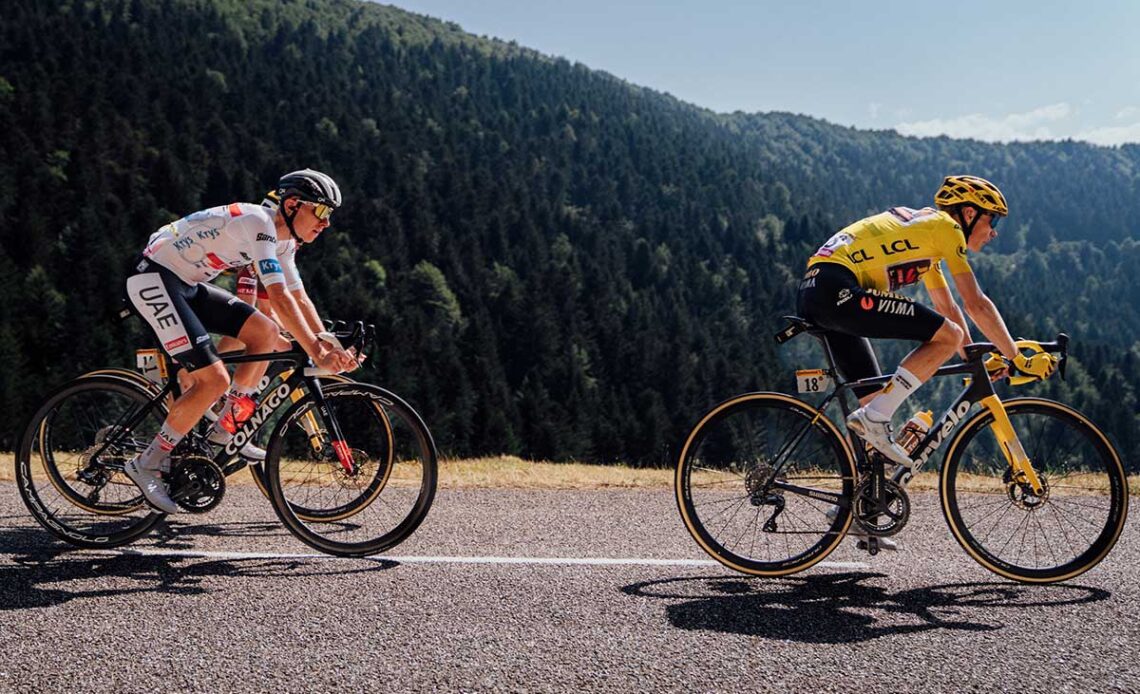For the vast majority of the 2022 Tour de France, the story of the race was of two elite contenders who were inseparable.
Everywhere the overwhelming pre-race favourite Tadej Pogačar (UAE Team Emirates) went, last year’s runner-up Jonas Vingegaard (Jumbo-Visma) followed. When Pogačar sprinted for stage victory at the top of La Super Planche des Belles Filles on the race’s first summit finish, it was Vingegaard’s wheel he edged ahead of to take it; when he unleashed his viscous finishing kick on the uphill finishes at Longwy, Châtel and Megève during the first half of the race, the Dane remained glued to his wheel; and over the course of the two time trials in the race, they were exactly level on time.
The pattern was the same for most of the crucial stages in the mountain ranges, when the pair placed first and second atop Peyragudes in the Pyrenees, having also crossed the summit finishes at Alpe d’Huez and Montée Laurent Jalabert with no riders — let alone any time gaps — between them. All of these stages had been characterised by constant attacks from Pogačar, but each time he was marked by a yellow shadow each time that refused to budge.
Read more
– Tour de France Femmes 2022 route: everything you need to know about the first edition
– Tour de France Femmes 2022 favourites: who will win the first yellow jersey?
At long last, on the final mountain of the whole race, the Hautacam, a rift opened up between them. Having once again tried and failed to drop his rival throughout the stage, Pogačar slipped away from the wheel of Vingegaard towards the top of the climb, the pace set by the indefatigable Wout van Aert proving to be too much. After a few more pedal strokes from the Belgian, Vingegaard roared away on his own, winning the stage in the yellow jersey with Pogačar trailing by a whole minute and four seconds. One again they were first and second, but this time there was a clear difference in quality.
It wasn’t on the Hautacam that the yellow jersey was won, however. Vingegaard’s move here was not that of a man striking out for glory, but merely confirming what had already by now appeared inevitable.
(Image: Zak Williams/SW Pix)
Rather, the fate of the yellow jersey was ultimately determined a week earlier, on the fateful Wednesday in the Alps, on the mighty cols of the Galibier and the Granon.
When we look back on footage of this Tour de France in future years, it’ll be tempting to remember it as…

